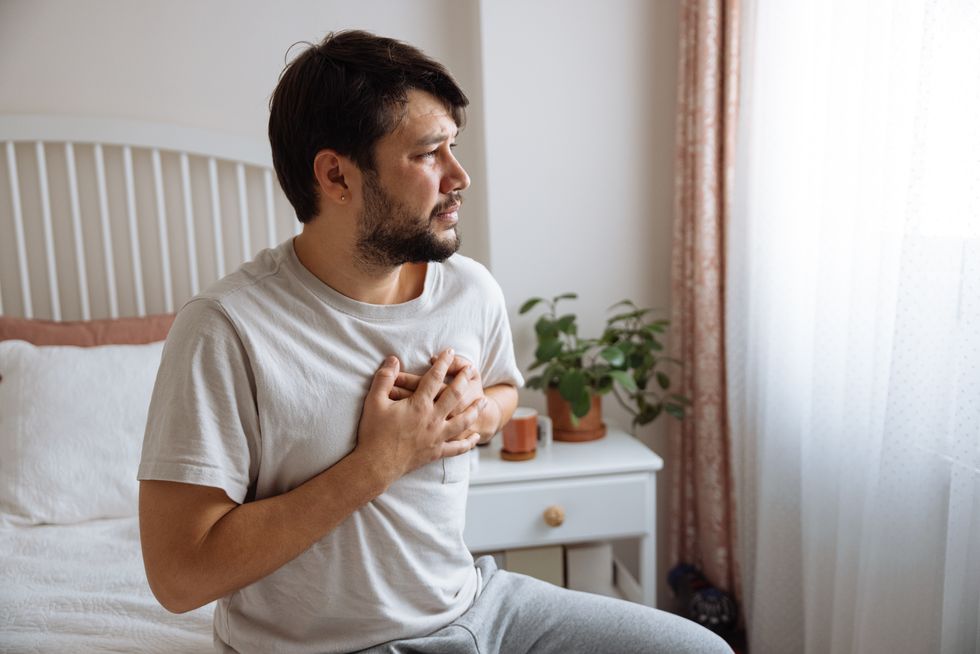WHEN YOU CUT YOURSELF, your blood clots over the injury to keep you from bleeding excessively. Once the injury heals, your body naturally dissolves the clot. So, blood clotting, also known as coagulation, is an important natural process.
Sometimes, however, blood clots can form in your blood vessels or arteries without an injury, and they don’t naturally dissolve. When blood clots block your blood vessels and restrict blood flow, a condition known as thrombosis, it can be dangerous and even life-threatening, says Erich De Paula, M.D., associate professor of hematology at the University of Campinas in Brazil, and vice chair of the World Thrombosis Day steering committee.
“Thrombosis is responsible for about one in four deaths worldwide,” he says. “This statistic should prompt the interest in learning how to avoid them through lifestyle modifications, as well as by knowing the signs and symptoms and seeking medical attention when necessary.”
And they can lead to serious complications too. Blood clots can interfere with blood getting to your organs. They can affect your heart, lungs, and brain.
One of the most common types is deep vein thrombosis (DVT), when a clot forms in a deep vein in your arm or leg. The blood clots can travel to your lungs, causing a pulmonary embolism. DVT and pulmonary embolism are known as venous thromboembolism, and this affects about 900,000 Americans every year, according to the Centers for Disease Control and Prevention.
Knowing the signs of different types of blood clots, which usually revolve around pain, could help save your life, Dr. De Paula says. “Information is key, so men who are prone to thrombotic-related diseases should make informed decisions with their doctors, as to when and how to prevent thrombosis events.”
What Is a Blood Clot?
Blood clots are clumps that form when platelets, proteins, and cells in your blood stick together, according to Penn Medicine. Clotting is a necessary bodily process to stop bleeding and heal an injury, and clots normally later break down and go away. When clots form where they shouldn’t or not as a result of an injury, they may not break down and can cause other health problems.
What’s more, a blood clot can form anywhere in your body. It’s known as deep vein thrombosis when it forms in your arm and leg veins. A pulmonary embolism develops when clots develop in your lungs. Blood clots that block blood flow to your brain can cause a stroke, and a heart attack when they form in your heart. Each type typically shows different symptoms.
Signs of a Blood Clot in Your Leg
Deep vein thrombosis (DVT) refers to blood clots that form in your body’s deep veins, usually your legs or arms, according to the National Blood Clot Alliance. Symptoms might include:
- Swelling, often in one arm or leg
- Pain or tenderness, usually described as a cramp
- Reddish or bluish skin
- Leg or arm that’s warm to touch
“It’s sometimes hard to describe,” says Bibhu Mohanty, M.D., a cardiologist and associate professor of medicine at the University of South Florida. “It’s like I feel pain that won’t go away, but I didn’t pull a muscle or hurt myself. I feel something that’s tight and just hurts.”
DVT often happens after long periods of being sedentary—such as taking a long-haul flight or lengthy car trip or sitting for long periods of time, he says. Smoking, being over 60, and being overweight can increase your risk, according to the Mayo Clinic. Women who are pregnant or take birth control pills are also at a higher risk.
You can help prevent DVT by:
- Moving as much as possible: Get up to stretch your legs every hour or so if you’re on a plane or sitting at your desk for hours
- Quitting smoking, which increases your risk for DVT
- Managing your weight, as being overweight increases your risk for blood clots
- Exercising regularly, which lowers your risk for blood clots
Signs of a Blood Clot in Your Lungs
When blood clots in your legs break off and travel to your lungs, it can cause a pulmonary embolism (PE). A PE is “the worst-case scenario” when you have a DVT, Dr. Mohanty says.
Symptoms can vary depending on your overall health and the size of the blood clot, according to Penn Medicine, but as blood flow to your lungs becomes more restricted, you might experience:
- Coughing that might produce bloody mucus
- Dizziness
- Heart Palpitations
- Leg pain or swelling
- Sudden shortness of breath
- Sharp and sudden chest pain
A PE can be life-threatening, so call 911 if you experience these symptoms.
Sometimes PE has no symptoms, however, Dr. De Paula says. In other instances, “a severe and acute PE can be experienced with symptoms from sudden death to near-fainting, severe chest pain, and abrupt shortness of breath.”
Since PE and DVT are closely related, the same groups are at risk, and moving more, managing your weight, and quitting smoking can reduce your risk for PE.
Signs of a Blood Clot in Your Heart
Blood clots can form in the arteries of your heart and block blood flow, causing a heart attack. Symptoms might include:
- Chest pain, pressure, or discomfort
- Shortness of breath
- Arm or neck discomfort
- Fainting
- Abnormal heart rate
- Loss of consciousness
“It is common that patients do not point to a specific area of the chest, but rather to a more extensive and poorly defined area of the chest when asked to identify the pain point,” Dr. De Paula says.
The symptoms can occur gradually or suddenly, Dr. Mohanty says. You might also experience sweating, gas, and bloating, and it might feel like acid reflux or heartburn. Symptoms also vary depending on which artery of the heart is affected and the size of the artery.
You can reduce your risk for a heart attack by:
- Eating a healthy diet full of fruits, vegetables, lean protein, and whole grains, and limiting sugar and salt
- Exercising regularly
- Managing your weight
- Following treatments for other health conditions
Signs of a Blood Clot in the Brain
Blood clots can also block blood vessels to the brain, which can cause an ischemic stroke, the most common type of stroke.
A stroke can happen when a blood clot forms within a blood vessel that supplies blood to the brain, known as cerebral thrombosis, according to the American Stroke Association. It can also occur when a blood clot forms in the heart or another part of your circulatory system, breaks loose, and travels through the brain’s blood vessels. This is known as a cerebral embolism.
The F.A.S.T. warning signs can help you spot a stroke:
- Face drooping
- Arm weakness
- Speech difficulty
- Time to call 911
Numbness, confusion, trouble seeing, difficulty walking, and severe headaches can also signal a stroke.
“Basically, if you’re noticing a marked change in your face, your ability to talk and move your hands or arms, one compared to the other, it is extremely important to go to the hospital,” Dr. Mohanty says.
You can lower your risk for a stroke by:
- Exercising more
- Lowering your blood pressure
- Stopping smoking
- Eating a healthy diet
When to Seek Emergency Care
The individual symptoms of different types of blood clots can vary, but any time you have chest pain or discomfort that’s radiating to the upper limbs or neck, shortness of breath, or a cough, seek medical attention, Dr. De Paula says.
Also, if you have unexpected pain or cramping in your leg that’s not related to an injury and doesn’t seem to be going away, get checked out, Dr. Mohanty says.
Basically, any time “something isn’t right and is different from your human experience, and it won’t go away, it’s definitely time to go in and have things looked at,” he adds.
Erica Sweeney is a writer who mostly covers health, wellness and careers. She has written for The New York Times, HuffPost, Teen Vogue, Parade, Money, Business Insider and many more.







Comments are closed.